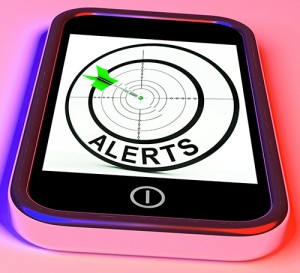 I am traveling in southern Idaho and I got to thinking about the technology necessary for modern emergency notification and response. I got an AMBER Alert on my cell phone to watch for a vehicle involved in a kidnapping. First of all, I had never heard my phone make a noise like that and second, I didn’t even remember signing up for AMBER Alerts. That was the first alert I ever got, so I was intrigued by the infrastructure necessary for emergency notifications and I did some research to see how it works.
I am traveling in southern Idaho and I got to thinking about the technology necessary for modern emergency notification and response. I got an AMBER Alert on my cell phone to watch for a vehicle involved in a kidnapping. First of all, I had never heard my phone make a noise like that and second, I didn’t even remember signing up for AMBER Alerts. That was the first alert I ever got, so I was intrigued by the infrastructure necessary for emergency notifications and I did some research to see how it works.
Emergency Notification
With the proliferation of cell phones, emergency notification becomes a lot easier and can be localized. In addition to the AMBER Alert I got this week, I also heard a tornado warning and flood warning from other cell phones. These all come through a program called Wireless Emergency Alert (WEA). WEA enabled cell phones from mobile carriers to automatically send these alerts through local cell towers. If you are in an area that broadcasts an emergency alert, then you will receive the message. Possible messages include AMBER Alerts, messages from the weather service, and emergency messages from the President of the United States. According to FEMA, you can opt out of weather and AMBER Alert messages but not messages from the President.
This makes it possible to broadcast to many people at the same time outside of the traditional television and radio emergency broadcast system. With the shift away from watching live television or listening to the radio, the broadcast system has adapted to reach us wherever we are.
Emergency Response
As with emergency notification, emergency response has been updated as well. Since cell phones can broadcast GPS signals, your call to 911 can be traced to your specific location, even if you don’t know where you are. This is most important when speed is critical for emergency personnel to reach you. Again, the system has adapted to our lifestyles and current technology. With enhanced 911, wireless and wireline calls are routed through a Public Safety Answering Point (PSAP) where your information and location are detected and relayed to safety personnel.
Thoughts
As we become more mobile and rely more on mobile devices, it is good to know that our emergency systems are broadcasting and collecting information through these devices. It may feel at times as there are few places left where we can get away from being connected but in an emergency, that’s a good thing.
Do you have any experience working with emergency systems? Are there still updates that would make it even better? Let me know your thoughts.
 About Kelly Brown
About Kelly Brown
Kelly Brown is an IT professional and assistant professor of practice for the UO Applied Information Management Master’s Degree Program. He writes about IT and business topics that keep him up at night.


LocalizING is the key. I got a very annoying amber alert at 3 AM—for an abduction over 4 hours away! It’s hard enough getting back to sleep after a bathroom visit; this is intolerable.